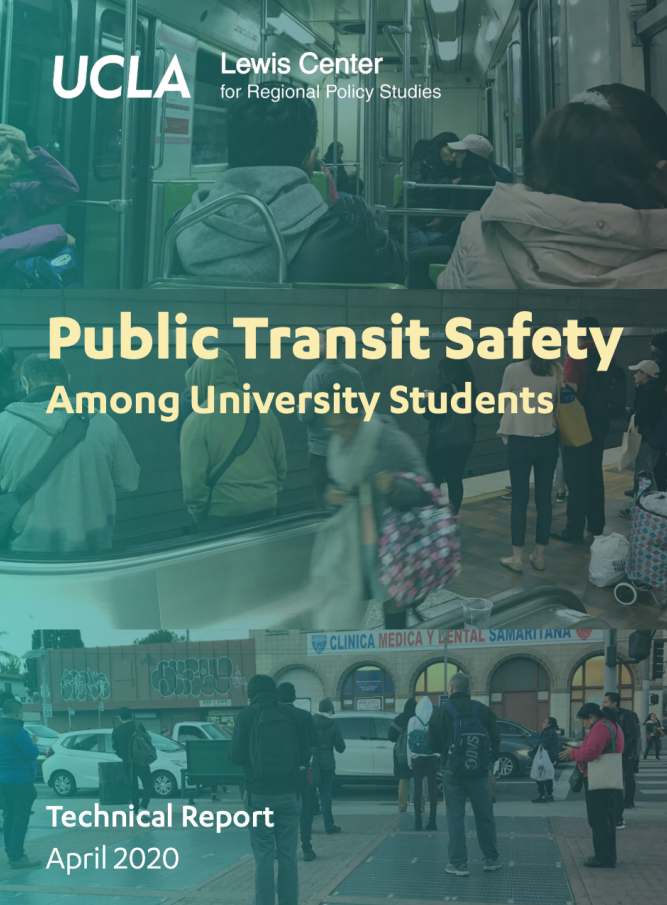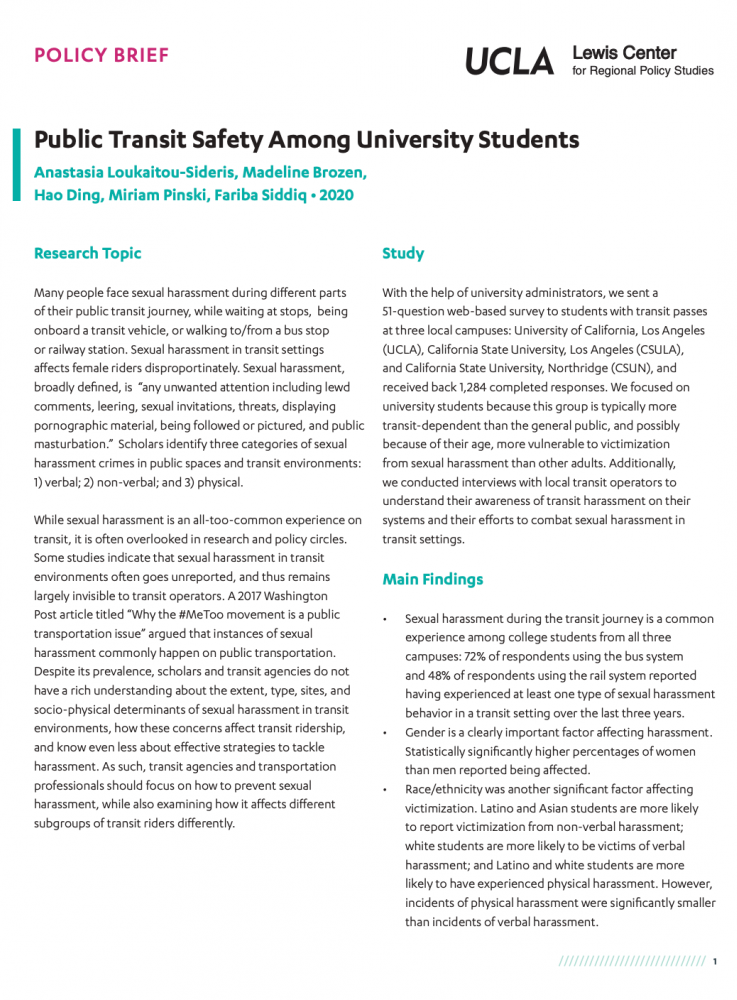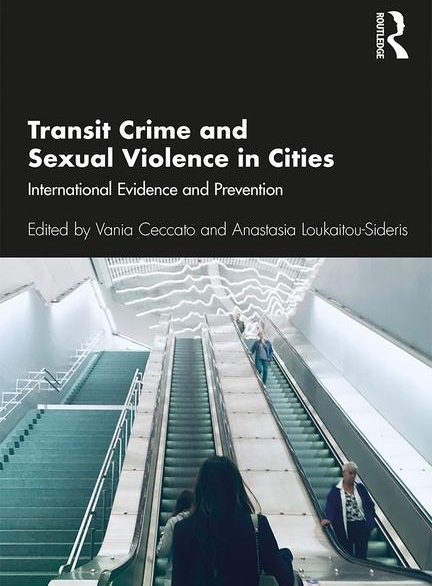Sexual harassment in transit environments is very common.
Indeed, 72% of respondents using the bus system and 48% of respondents using the rail system reported having experienced at least one sexual harassment behavior at a transit setting over the last three years.
Sexual harassment affects primarily female students, but some male students are also affected.
Significantly higher percentages of female than male students reported experiencing sexual harassment. A small number of transgender students completed the survey, but the small sample size (n=5) limited meaningful analysis.
Sexual orientation may affect harassment incidence but results are mixed.
LGBTQI students run a statistically significant higher chance of being sexually victimized than straight students, but only on the subway; more robust samples are necessary for further analysis of this relationship.
Frequency of transit use affects victimization.
Bus or train riders using transit three or more days per week were more likely victims of sexual harassment.
Different types of sexual harassment take place at different transit settings.
Verbal harassment was much more common than non-verbal (e.g. stalking, indecent exposure) or physical harassment. Additionally, higher percentages of students reported experiencing sexual harassment while using the bus system than while using the train system. Different types of transit settings seemed to attract more prominently certain types of harassment behaviors. For example, women were more likely to experience obscene language at the transit stop or on the way to the stop, and more likely to experience inappropriate touching while onboard the transit vehicle.
Some characteristics of the physical and social environment influence harassment incidence.
Regression models showed that certain characteristics of the physical environment enhance or decrease the possibilities of harassment and student perceptions of safety at transit settings. For example, desolate bus stops increased the fear of students, while the lack of adequate lighting at transit settings was linked to more harassment incidents. The regression models also showed that certain characteristics of the social environment, such as the presence of drunk individuals and drug use/drug sales at transit stops, may increase the incidence of sexual harassment.
Sexual harassment creates fear among female riders and reduces transit use.
While 45% of male students “always” felt safe waiting for or riding the bus during the day, only about 26% of female students felt “always” safe; and while a bit over 40% of male subway riders “always” felt safe riding or waiting for the train during daytime, slightly more than 20% of female riders indicated the same. Eight percent of men and 10% of women said that they do not use the bus after dark.
Fear leads female students to take precautions, including not using transit.
The survey showed that 65% of female students felt the need to take some precautions during their transit trips, compared to only 30% of male students who did the same. Fear leads those students who have other options to avoid transit, while some students who are captive riders feel the need to avoid traveling at night or take a series of other precautions.
Sexual harassment is largely underreported.
Only 10% of all the students who experienced or observed crimes of sexual harassment on transit reported the incident. These students reported mostly to friends or family rather than to the police or transit operators.
The Los Angeles student experience is a global experience.
|Comparing the findings from this study to findings of a global study involving 17 other cities, showed that sexual harassment on transit is a global experience, even though the extent of harassment varies among different cities.
There is a general lack of awareness from the part of transit agencies regarding the extent of sexual harassment on public transit.
Only a few agencies include questions about sexual harassment in their passenger surveys; and those who do, focus only on the onboard passenger experience. Additionally, because reporting of harassment is so limited, many agencies do not have a clear picture of the problem.




